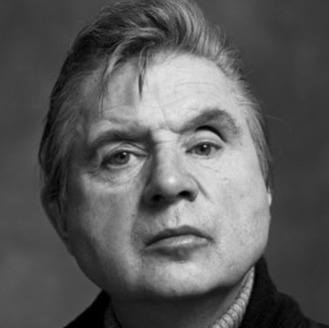
Francis Bacon
Francis Bacon was a figurative painter who created some of the most recognizable post-war art. His distinctive style made him a prominent figure in figurative art during the 1940s and 1950s.
Biography of Francis Bacon
Francis Bacon was born in Dublin and named after his famous ancestor, the English philosopher and scientist. His father served in the army and later worked in the War Office during World War I. In an interview with critic David Sylvester, Bacon linked the violent themes in his artwork to the turbulent circumstances of his early life.
During the late 1920s, the artist settled in a London apartment and engaged in interior and furniture design. Artist Roy de Maistre, one of his patrons, became his mentor, encouraging Bacon to pursue oil painting. Influenced by Picasso and the Surrealists, whose work he encountered on a trip to Paris, his early pieces emulated their style. In 1933, he displayed "Crucifixion," a skeletal black and white composition radiating the pain and fear that would characterize his later work. The painting was featured in Herbert Read's book "Art Now" and was acquired by Sir Michael Sadler. Buoyed by this success, Bacon organized his art exhibition the next year, although it received limited attention. His paintings were also included in the International Surrealist Exhibition but were deemed insufficiently surreal and rejected. Disheartened, Bacon destroyed much of his pre-1943 work, leaving only fifteen pieces.
Because of his asthma, Bacon couldn't enlist in the armed forces during WWII. He joined the non-military Air Raid Precaution sector but was discharged due to illness caused by dust and rubble exposure.
After the war, he resumed painting with renewed fervor, marking "Three Studies for Figures at the Base of a Crucifixion" (1944) as the true beginning of his artistic journey. The painting depicted elongated necks, contorted bodies, and gaping mouths, conveying horror and suffering, and serving as a powerful commentary on the aftermath of the war. He modeled these figures after animal motion photographs, which became a prominent theme in his later works. Though critics were initially shocked by its explicit imagery, the painting's exhibition at the Lefevre Gallery brought Bacon into the spotlight.
His breakthrough at the 1944 exhibition led to more opportunities with Lefevre. A friend and fellow artist, Graham Sutherland, recommended him to the director of Hanover Gallery, where Bacon's first solo exhibition took place in 1949. In this show, he unveiled the "Heads" series, introducing key motifs: a scream inspired by a film still from Sergei Eisenstein's "Battleship Potemkin" and Diego Velázquez's "Portrait of Pope Innocent X."
In 1953, the Hanover Gallery exhibited Bacon's paintings, including "Two Figures," an image of embracing men in bed that created a huge scandal. Based on photos by Victorian photographer Eadweard Muybridge, Bacon noted the difficulty in discerning whether the figures were wrestling or having sex. Bacon often relied on photographs, especially those taken by his friend John Deakin, but he found Muybridge's attempts to capture body movement captivating. Bacon maintained a collection of Muybridge's books in his studio as an ongoing source of reference, and he even indicated that his thorough examination of these sequential photographs sparked his fascination with creating artworks in a series.
Bacon's work gained international exposure with retrospectives at the Hirshhorn and Tate Gallery. He also achieved the distinction of becoming the first contemporary English artist to have a major exhibition at the Metropolitan Museum of Art in New York in 1973. In his later years, he withdrew from social life, concentrating on his work. The artist passed away in Madrid at the age of 81.
His unique interpretations and deeply personal art make it challenging to pinpoint his influence on contemporary art. However, his work has inspired notable artists of this generation, such as Julian Schnabel and Damien Hirst. Following his passing, Francis Bacon gained recognition as one of the world's most significant painters.
Francis Bacon's Art Style
Bacon's canvases effectively convey intense emotions, with entire scenes seeming to emit screams that extend beyond the individuals depicted. This ability to evoke such potent emotions was pivotal in shaping Bacon's distinct achievement in the realm of painting.
The artist focused primarily on portraiture, frequently depicting individuals from London's Soho neighborhood bars and clubs. His subjects were consistently portrayed in a violently distorted manner, often resembling raw meat, which symbolized isolated souls trapped and tormented by existential struggles.
Bacon's mature style emerged in the late 1940s, evolving from his earlier Surrealist approach into a method that incorporated elements from motion depictions in film and photography, notably drawing inspiration from Eadweard Muybridge's studies of figures in action. Through these influences, the artist not only pioneered fresh techniques to imply movement within paintings but also achieved a more cohesive union of painting and photography.
Despite Bacon's success resting on his innovative approach to figurative art, his artistic principles remained deeply rooted in tradition, with The Old Masters greatly inspiring him. In an era when many doubted the significance of painting, Bacon steadfastly maintained his belief in the importance of the medium.
Years:
Born in 1909
Country:
Ireland, Dublin
Gallery: